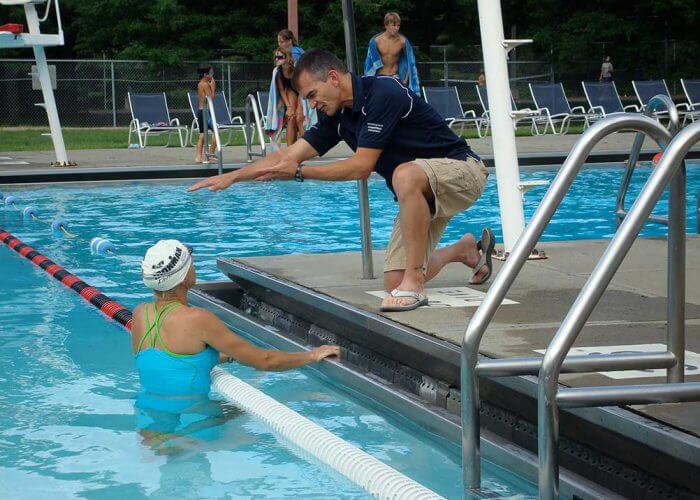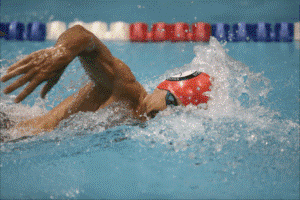How Dryland Swim Training Benefits All Skill Levels And Ages

It’s well-known that dryland swim training is a great benefit to competitive swimmers. But what can it do for beginners and adult-onset swimmers?
We asked two experienced coaches for their advice on the subject and both agree that dryland swim training can benefit any athlete, age and fitness level. Tim Crowley – Head Strength and Conditioning Coach at Montverde Academy and former U.S. Elite Coach of the Year, and Stew Smith – fitness author, former Navy Seal, and trainer for the U.S. Naval Academy and Special Ops Teams, had plenty of real-life examples to tell us about.
Teaching new swimmers
“I can get anybody in the pool, and after 30-40 minutes of teaching, can get them to swim 25-50 yards and look good,” says Crowley. “But ask that same person to swim 1000 yards and their stroke falls apart. On a Vasa SwimErg, I know when neuromuscular fatigue sets in and when the athlete’s stroke is going to fall apart. And we can work on improving that outside of the pool.”

New swimmers can build strength and stamina on land using swim training equipment like Vasa to help them become more confident and stronger swimmers in the water; Photo Courtesy: Vasa Trainer
Beginner swimmers are often stressed out by swimming in the water. Crowley says that for those athletes, in particular, it’s hugely beneficial to make progress by doing dryland swim ergometer training. “Athletes new to swimming are often too concerned about getting the next breath,” he says. “Building strength and stamina on land by using a Vasa can help them develop the swim muscles so that when the swimmer gets in the pool they swim well because they’re both strong and confident. The motion is familiar even if the medium is not.”
Swimming as a life skill
“Swimming is a survival skill every human should have, ” says Smith. “It’s a fitness training tool, but it can keep you alive and effective in our world that is 75% covered with water. And as far as the military goes, you don’t need to be a world-class swimmer to join special ops programs. You just need to be a proficient swimmer. Knowing how to swim can save the life of someone you know.”

Swimmers, from beginning to elite, need swim-specific training out of the water. Photo Courtesy: Vasa Trainer
For Coach Crowley, swim-specific training isn’t just learning to tread water, easy side stroking to unwind or even mindlessly swimming endless laps in the pool. Crowley, who trains athletes from amateurs to the elite level, says there are various ways to approach swim-specific training. Those include pool workouts, weight room sessions and using dryland swim training equipment like the Trainer Pro, all of which can help athletes improve and manage their overall training.
Swimming for fluid movement
Smith puts his athletes and himself in chest-deep water in the pool to work on mobility. “It’s heavenly,” says Smith. “I started in my 40s. Now that I am in my 50s, it’s a staple of my workout.”
He also makes it a staple for the military athletes who comprise most of his clients. “I like to use swim training, in or out of the water, as a recovery tool. If I get an army guy who just got through a long run, I put him in the pool to recover from that trauma.”
And when there’s no pool at hand, he uses dryland swim training the same way. “I love the weightlessness and natural compression of water,” says Smith. “But you can get many of the same muscular and skeletal benefits of being in the water using a Vasa SwimErg.”
Swim training for balanced conditioning
“Most sports are lower body dominant,” says Smith. “Swimming is great for balancing upper-body & lower-body conditioning. In a perfect world, swimming should be a part of every athlete’s training program. I enjoy it, especially as I age because there is no impact. I leave a swim workout and there’s no pain like there is after running, high rep calisthenics or weight lifting – everything feels great.”
If You Like This Article You May Also Like: Total Body Swim At Home Workout: Core, General Conditioning, and Swim-Specific Training | 4 Ways Swim-Specific Dryland Training Improves Performance | How to Train for Swimming When You Can’t Get to the Water
The above article was posted by Swimming World in conjunction with Vasa Trainer. For information about advertorial and advertising opportunities, please contact advertising@swimmingworld.com



